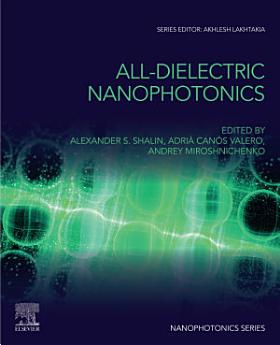All-Dielectric Nanophotonics
About this ebook
About the author
Dr. Alexander Shalin is currently an Associate Professor at Riga Technical University and a Principal Researcher at Moscow Institute of Physics and Technology and Senior Researcher at Moscow State University. Dr. Shalin got his PhD in physics (Optics) in 2007 from Ulyanovsk State University, Russia. In 2014 he was awarded the title of Full Doctor of Sciences from ITMO University (Saint Petersburg). In 2015, he became the head of the Laboratory of ‘Nano-Optomechanics and NanoPhotonics’ at ITMO. He possesses significant scientific experience and has more than 150 publications in prestigious journals and several monographs. He has contributed extensively to the development of all-dielectric nanophotonics, including but not limited to the introduction of higher order toroidal moments and hybrid anapole states, studies on the optomechanical interactions of dielectric nanoparticles, or the first proposal of the unusual transverse Kerker effect. In 2017, he was recognized as Best Young Scientist in ITMO.
Dr. Adria Canos Valero received his MSc in Materials Science and Engineering from the EEIGM (France). After a period at CERN (Switzerland) focused on the study of superconducting materials, he went ahead to pursue his passion in theoretical electromagnetism at ITMO University, where he recently acquired his Ph.D. His research is centered around the study of non-radiating sources and non-Hermitian effects arising in all-dielectric nanophotonic platforms. He has authored several interdisciplinary works on all-dielectric nanophotonics published in highly reputed journals. Among his most relevant contributions, together with his co-authors, he introduced and observed the non-radiating source known as Hybrid Anapole, proposed an on-chip all-dielectric scheme to mix fluid in nano volumes, and found a connection between symmetry breaking and super scattering mediated by bound states in the continuum.
Dr. Andrey Miroshnichenko is currently a professor at UNSW Canberra in the School of Engineering & Information Technology. Professor Andrey Miroshnichenko received this Ph.D. in 2003 from the Max-Planck Institute for Physics of Complex Systems in Dresden (Germany) and joined in 2004 the Nonlinear Physics Center at ANU, Australia. During his career, he has made several fundamental contributions to the development of photonic crystals and played a crucial role in introducing the Fano resonance concept to nanophotonics. In 2017 he was awarded the renowned UNSW Scientia Fellowship, and joined the University of New South Wales in Canberra. He has authored or co-authored more than 250 journal publications and a book and several book chapters. His research interests encompass a wide range of topics within nonlinear nanophotonics, nonlinear optics, optical nanoantennas, metasurfaces and nanoclusters.




